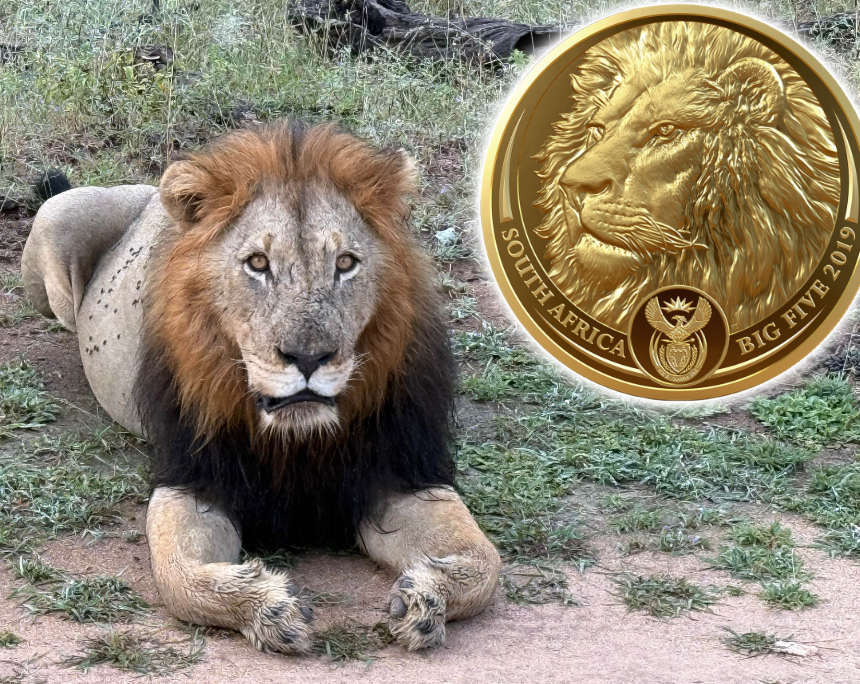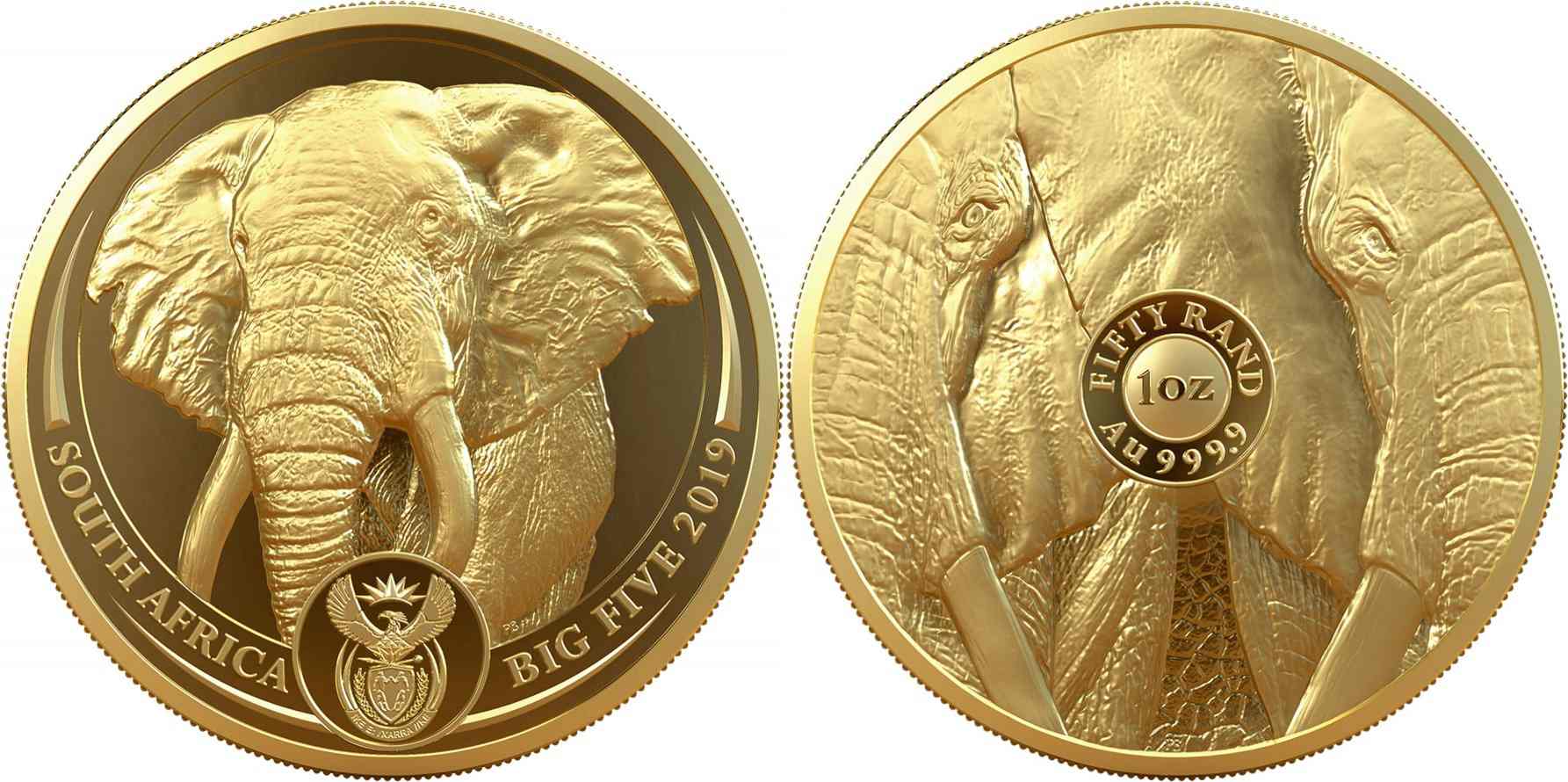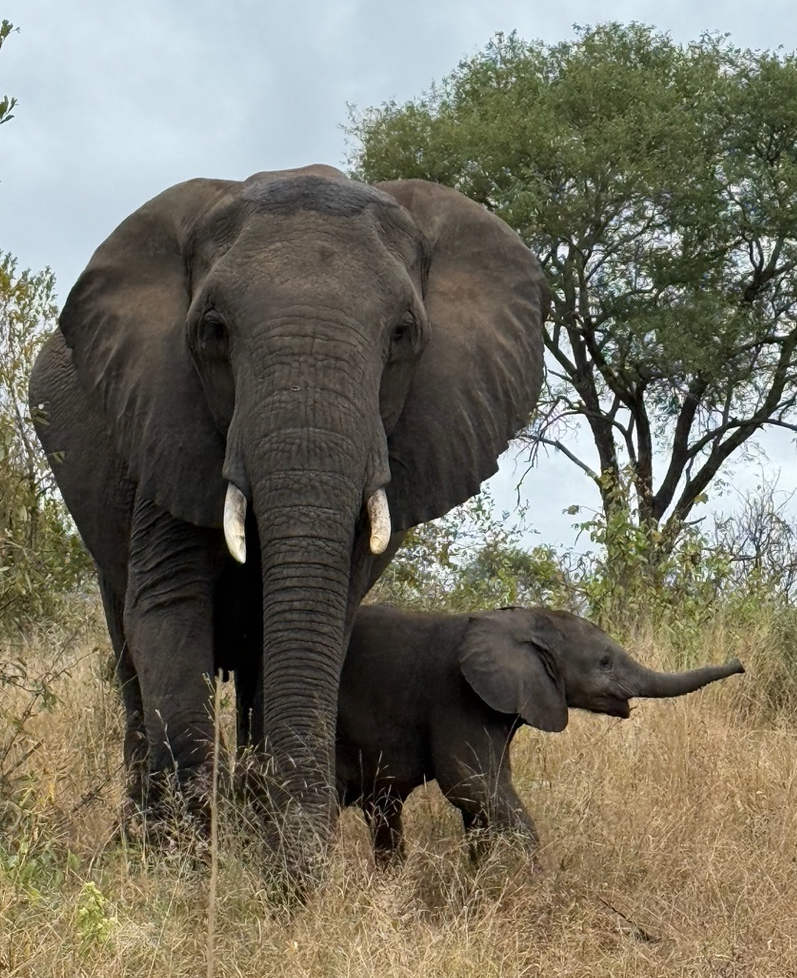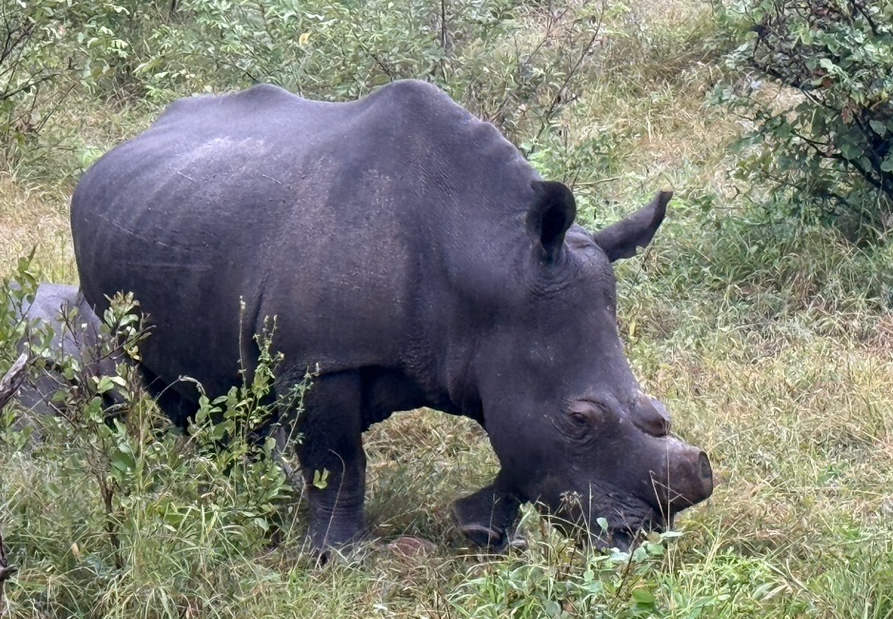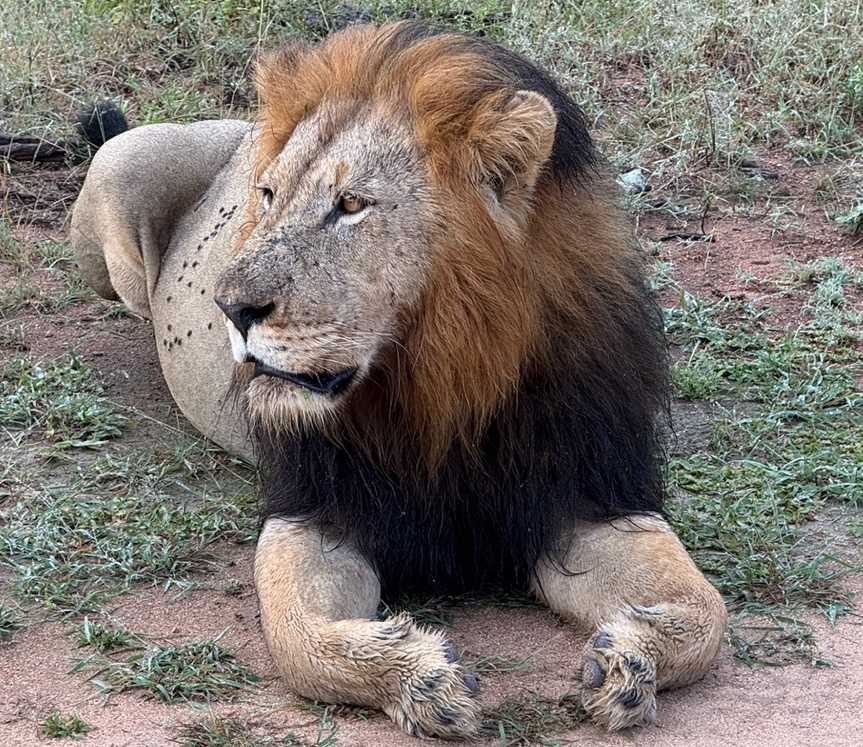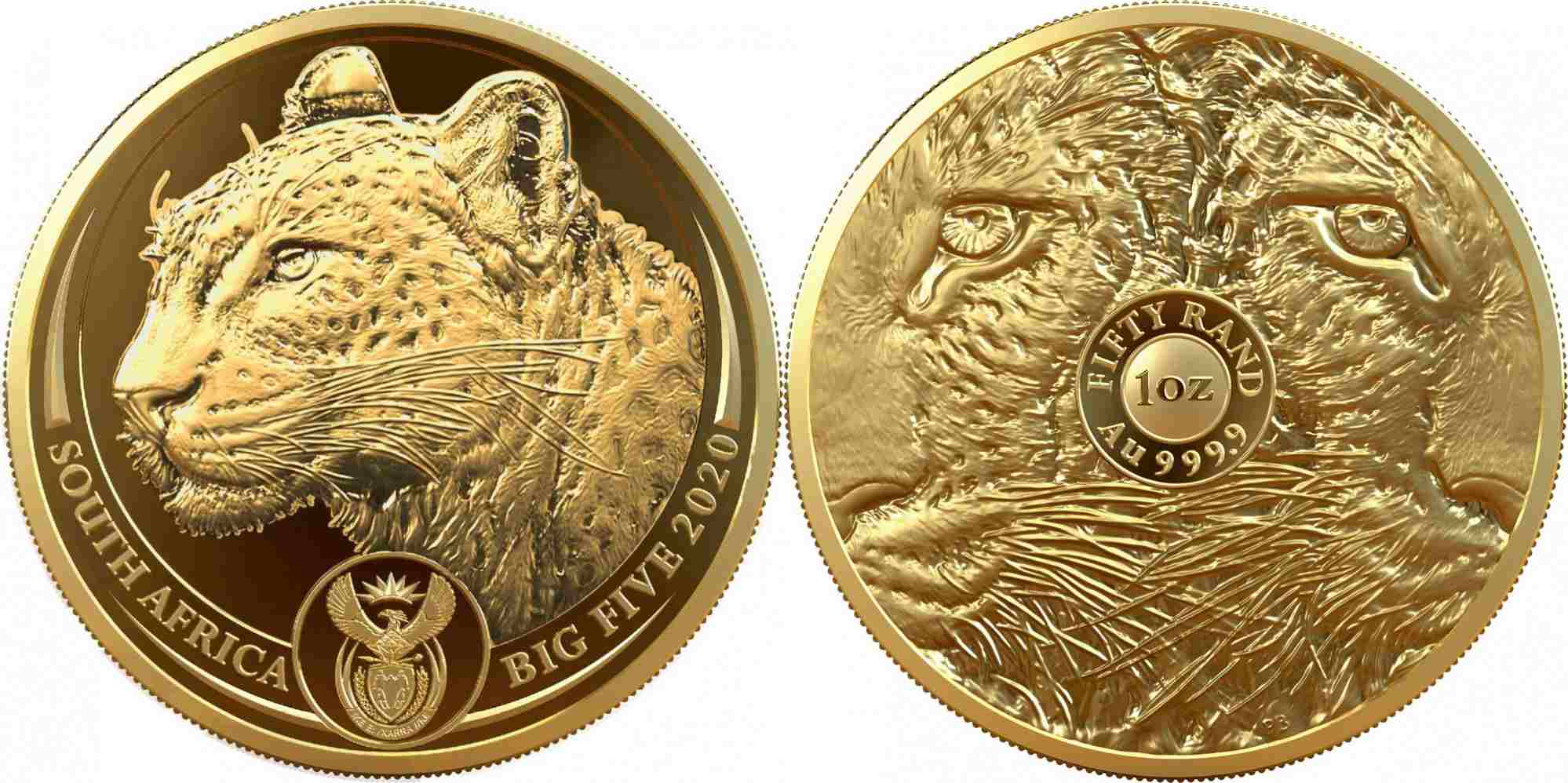In Search of the Big Five
No matter who you talk to about your safari: Anyone who has ever visited an African national park will automatically compare whether you saw more or fewer of the “Big Five.” The concept actually dates back to the time when white men in strange gear roamed the savannah at the head of their black porters. Their goal was to shoot as many animals as possible under the most “glorious” circumstances. Hence the “Big Five.” They refer neither to the largest, nor the rarest, nor the most beautiful animals, but rather to those whose hunting was once considered the most dangerous.
It’s fascinating that this ancient concept still holds true today. And it’s not just tourists who are keen on lions, leopards, elephants, buffaloes, and rhinos; rangers love to show them, even though there are so many other animals that are easier to find and at least as interesting. Unfortunately, coins contribute to this tourist fixation: The South African Mint has now launched its third(!) series on the Big Five.
Content
But there are alternatives! Tourism refers to them as the Ugly Five (ugly is more interesting than pretty) and the Small Five. While the Ugly Five (marabou stork, vulture, warthog, wildebeest, and hyena) are relatively easy to find—I could tick five boxes in my imaginary catalog—the Small Five (elephant shrew, rhinoceros beetle, buffalo weaver, ant lion, and leopard tortoise) are truly difficult to observe. If you’re looking for a real challenge, skip the Big Five and look for the Small Five.
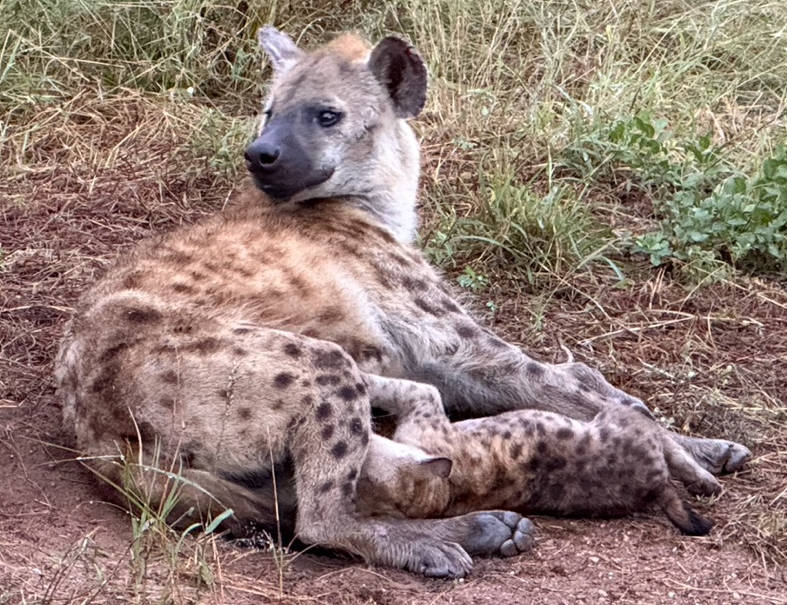
Not part of the Big Five, but part of the Ugly Five, the hyena. Meeting a small pack of hyenas was the favorite moment of my safaris. Photo: UK
Nationalparks and private reserves
Well, don’t expect to stumble across wild animals everywhere in South Africa. Anyone familiar with the smooth transition from nature to national park in Europe or North America will be astonished. Nature in South Africa is kept behind fences. Anyone who wants to see wild animals, birds, or amphibians generally has to pay an entrance fee. First, there are the state national parks, topped by the world-famous Kruger. Countless small and large reserves beckon with their natural beauty.
In addition, there are countless private reserves that hoteliers use to upgrade their establishments to lodges. A few giraffes, several zebras, numerous antelopes, and perhaps even a family of hippos roam around in them. The composition is arbitrary. It varies from lodge to lodge – the more and the more dangerous the animal species, the more exclusive. And, of course, small is relative – in South Africa, there is so much space that even a “small” private reserve can cover several hundred hectares. The Kruger National Park measures an impressive 20,000 square kilometers, making it roughly the size of the German state of Saxony-Anhalt.
Nevertheless, and this must be said at this point, this ecosystem, carefully guarded for tourism, has nothing to do with the original Africa. It is constantly monitored and fostered by humans. That’s the way these areas are inhabited by as exciting animals as possible in order to attract as many tourists as possible.
That I’m almost crying the first time I sit in front of my lodge and a small herd of antelope is looking at me; that I’m sitting for over an hour in complete darkness just to hear the sounds of the forest; that I’m fascinated by the elegance of the giraffes and zebras: well, that’s another story.
The Elephant
In any case, the Kruger is the South African national park of choice if you want to see as many of the Big Five as possible in one place. And let me dispel the next misconception about South Africa right away. Yes, it rains here too. And, as I’m unpleasantly surprised to discover, quite intensely. It’s also unpleasantly cold. Well, that’s what you get when you travel in the South African autumn.
I arrive at Kruger National Park in this terrible weather. I’m pissed! I’m really pissed! Once in a lifetime in Kruger; once in a lifetime, I paid enough for two nights in a private lodge that I could have spent a vacation lasting several weeks somewhere else, and then it rains!
I’m so pissed that I almost don’t look when the first giraffes, just beyond the park boundary, are happily plucking a few leaves from the trees. These are just the first of many animals lined up along the road. And not even five minutes later, I mentally tick the first box of the Big Five.
A herd of elephants crosses the road. Several elephant cows with their young calves march past me – like Colonel Hathi’s elephant parade. I’ll observe so many elephants over the next few hours that I’ll only take a photo when they’re particularly close / cute / interesting. Pure elephant abundance.
The Rhino
I’m seeing my first rhino a little later, in the first five minutes of my first safari. Booking a lodge doesn’t just pay for accommodation and full board. The exorbitant price includes several safaris per day. The number, duration, and quality are directly related to the price. As I said, I doubted my sanity when I paid the money. But as I sit in the jeep, I know that every rand is well spent.
Our vehicle – an open safari vehicle – is designed for six to eight people. Each seat has a bag with blankets and a top-quality rain poncho(!). My problem seems to be solved. I wrap myself first in blankets and then in the poncho. This ensures that at least only the smallest parts of me get soaking wet. The rain slaps my face as we speed along the asphalt roads at 50 km/h with the windshield down. Two rangers accompany us on all three tours: in the morning from 6:00 a.m. to 9:30 a.m., then on foot from 10:30 a.m. to 12:30 p.m., and again in the evening from 4:00 p.m. to 7:30 p.m. One drives and provides commentary, the other does nothing but look for animals and tracks. On this first trip, his job is a piece of cake. As I said, it’s five minutes to the first rhino. Then elephants, hyenas, zebras, wildebeest, hippos in and out of the water, …
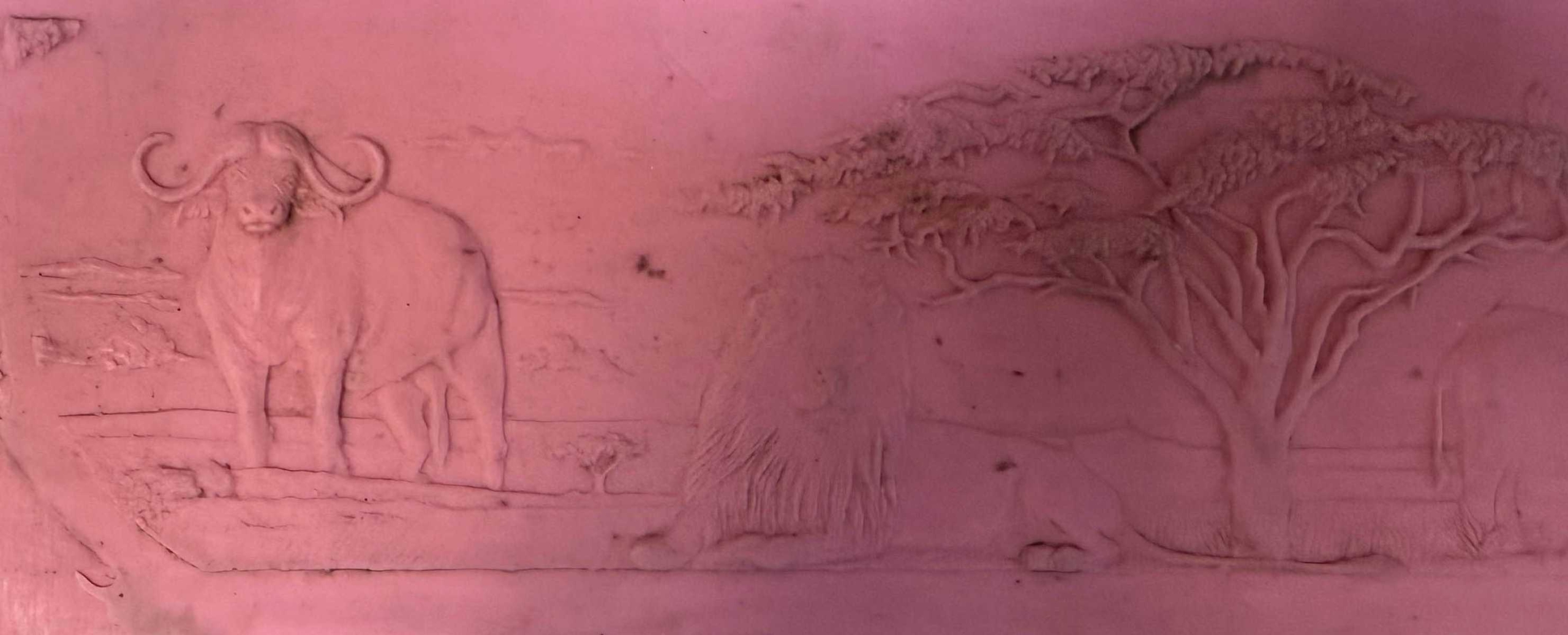
Model for a frieze featuring the Big Five from the Cape Mint / Cape Town. Here, buffalo and lion. Photo: UK
The Buffalo
… and of course the buffalo. We see them shortly after sunset (hence no photo). For everyone’s relief, we forgo the usual sundowner. Just to clarify: A sundowner isn’t about simply standing around and watching the sunset. For a sundowner, ranger and tracker set up a small table with snacks and the cocktails previously ordered from the bartender. Sipping a gin and tonic (in my case, non-alcoholic tomato juice) in the fading light of the setting sun and philosophizing about life is a tradition in South Africa.
But not today. Today it’s raining. We don’t even see the sunset because the sky is already overcast and dark. On the return trip, our tracker climbs onto his jump seat on the hood, shines his flashlight along the roadside, and shows us who is out and about. An owl, a few monkeys, a hippopotamus, and the third of the Big Five, the buffalo.
African buffaloes are large, have thick skulls with impressive horns, and are actually quite common. I don’t even bother to photograph the animal after dark. I expect we’ll see many more tomorrow. How wrong one can be!
The Lion
There are six of us tourists the next morning. All of us are pretty sleepy, because the gamekeeper personally waked us up by phone at 5:30. Not all guests want to go on safari at 6:00 a.m., and at 5:30 a.m., I really sympathize with them. But that changes in the next fifteen minutes. As soon as we’re back on the road, a lion leisurely crosses the road. Our ranger knows her (well, probably not personally). He knows she’s raising her cubs somewhere nearby. Now she’s on her way to them.
We meet Papa Lion half an hour later. He’s lying on the side of the road, watching tourists. His mane is freshly washed and fluffy after yesterday’s heavy rain. But the first flies have already landed on his now clean fur.
The gamekeeper isn’t surprised that the lion is making himself comfortable by the road. We learn that lions are also cats who don’t like rain. (I can empathize with them!) Wet grass tickling your bare belly? Ugh! It’s much drier near the road, and that’s what gives us the surprising sight.
No Leopard
Now all we need is the leopard. A piece of cake, you’d think. But gamekeepers have a superstition that if a tourist calls the leopard by name, you won’t find it. A wonderful excuse! This glosses over the fact that leopards are extremely rare. Not that they don’t exist in the Kruger. They’re there. We see their tracks, their droppings, and hear their calls. The ranger even shows me during our walk that a leopard sat under my stairs. Somehow, I don’t find it so strange anymore that every tourist is escorted back to their cottage after dinner.
Well, the leopards prefer to keep to themselves today. And not just the leopards. The weather is glorious again, and the animals no longer have any reason to populate the well-mown verges of the road. They retreat, and our gamekeepers are practically despairing because all they can show us is a small gecko and a couple of warthogs. The late risers who missed the lion are annoyed. I am, too. Why do we always have to chase lions when there are so many interesting birds in the trees?
At least morning tea and sundowners are now as they should be: beautiful scenery, a blazing red sun, and not a single animal in sight. Oh, even if there are no leopards now, I’ve seen so many beautiful things!
A lesson for life
The morning I drove to Kruger, a German couple warned me not to get my hopes up too high. The national park is large, and the animals have plenty of space to be wherever they want to be. Thanks to the rain, which I initially cursed so much, I’ve seen more animals than I could ever have imagined.
Isn’t that how it goes sometimes in life? That the very thing you think is a misfortune turns out to be a great stroke of luck?
In any case, I would be happy if the tourism industry would also take the lack of availability of lions and leopards into account in order to shape its tourists in such a way that they are not always only happy when they have seen the Big Five.







